Executive Summary
The 2023 Technology Tools for Today (T3) Advisor Conference, held last month in Tampa, Florida, featured a large gathering of financial advisors and representatives across the fintech industry attending the 2½-day conference. Hosted by Joel Bruckenstein and his team from T3 Consulting, the conference covered everything from how technology providers are continuing to expand their features and integration capabilities to how advisors can manage their own expanding tech stacks to the ever-present question of how AI tools like ChatGPT will impact the advisory industry.
In this guest post, Craig Iskowitz – CEO and founder of Ezra Group, a financial technology consulting firm – summarizes this year’s conference highlights with his signature Twitter-driven recap, kicking off with presentation highlights from financial planning software platform MoneyGuide, which announced its own version of the increasingly popular “one-page financial plan”, reflecting the greater demand from advisors to streamline printed plan materials. Additionally, MoneyGuide rolled out a new "Plan Pulse" dashboard allowing advisory firms to look across all of their clients’ plans and identify those who have fallen behind.
Another ongoing theme of the conference, which has persisted for several years, is the continuing effort to expand software integration capabilities to cover all parts of a client’s plan with no gaps caused by the failure of one tool to talk to another, and the different approaches that firms take to achieve better integration – whether they work to increase their integration with different third-party software tools (like MoneyGuide), offer a variety of products and services that can be purchased separately but integrate seamlessly with one another (like Morningstar), or combine virtually every type of technology tool into a single “growth platform” (like Riskalyze) that seeks to serve as virtually the advisor’s entire tech stack in one product!
Other major highlights from the T3 Advisor Technology Conference included:
- Several speakers talked about how their firms are using AI technology, including Orion Advisor Technology President Brian McLaughlin, who discussed how advisors add value in ways that can’t be co-opted by AI and whose firm recently integrated ChatGPT into its RedTail CRM software.
- The resources that advisory firms invest in new technology can be wasted if employees don’t know how (or why) to use it. As Sequoia Financial’s Chief Technology Officer Trevor Chuna discussed, a software adoption plan goes beyond just initial training and includes updates on new features, ongoing training, and regular communication to get ongoing results.
- An update from Fidelity provided data suggesting that clients increasingly want support in areas beyond investment management from their financial advisors – which in turn has led advisors to invest heavily in specialized planning software to go deeper into more areas as robo-advisor technology has drastically reduced the cost of providing investment management.
- An update from Schwab, amidst the final stages of its integration with TD Ameritrade (scheduled for completion before next year’s T3 conference), confirmed that TDA's thinkpipes and iRebal trading and rebalancing tools are expected to be retained and migrated over to Schwab. The Schwab executives also noted that the Schwab Advisor Center platform will incorporate many of the most popular features and functionality of the Veo advisor platform. SAC, like Veo, allows for integrations with many third-party platforms.
- RIA owners who sell their firms to large RIA aggregators based on overall price alone – without fully understanding the terms of the deal – can find themselves regretting their decision, according to Dynasty Financial Partners founder Shirl Penney.
Finally, the annual T3/Inside Information Software Survey, which assesses the software programs used by financial advisors, found that almost every software category has seen greater adoption among advisors – as while advisors are increasingly offering comprehensive advice and expanding how they provide value to their clients, their tech stacks are also expanding in kind – which only reinforces the challenges of navigating and maximizing the value of numerous software tools via enhanced integration capabilities in the software platforms themselves.
Ultimately, the 2023 T3 Advisor Conference brought together vendors, industry thought leaders, financial advisors, and students to gain insight into the fast-paced growth and change of the financial planning industry and the new technology tools available to help financial planning businesses flourish. And with the expansive array of new and upcoming technology solutions, there was an increased focus – which will no doubt continue as a theme in future conferences –not just on the tools themselves but also on how to use an entire suite of technology solutions while still creating a seamless planning experience for clients!
Learning does not make one learned: there are those who have knowledge and those who have understanding. The first requires memory and the second philosophy.
― Alexandre Dumas, The Count of Monte Cristo
Knowledge of wealth management technology can be gathered from a simple web search.
But if you’re searching for an understanding of the best tools and advice on how to deploy, integrate, and utilize them to grow your business, then a little more effort is required.
A decade ago, I discovered the Technology Tools for Today conference, now known as T3, as being a veritable bastion of information, openly shared best practices, and advice, as well as a resource for networking opportunities with a little fun thrown in for good measure.
The 19th annual T3 conference took place in (mostly) sunny Tampa, Florida, and over 3 days, more than 900 attendees were treated to dozens of speakers, panel discussions, and vendor pitches along with sidebar discussions of the recently unfolding SVB crisis that gave the proceedings an edgier feel.
I’m always impressed by how many press releases get dropped during T3. It’s a testimony to how well conference organizer Joel Bruckenstein has positioned the conference as the “must-attend” event of the year.
With more than 60 presentations and sessions, it would be impossible to cover them all. Here’s my summary of the highlights from the event, which is more than a quick overview.
If you were able to attend, please add a comment below about your favorite speaker or panel. And if you missed it, you could still post a comment about which parts of the summary you liked the most.
Envestnet | MoneyGuide
I want to bang my head against the wall when I see advisor software with a user experience that’s almost impossible to navigate.
Multiple layers of menus, functions that require too many clicks, and screens cluttered with so many controls that it looks more like the cockpit of a 787.
Overly complex reports are another pet peeve of mine, and financial planning output takes the cake in this category. Very few clients understand everything in a 40- or 50-page report full of charts and graphs.
That’s why I’m a fan of the recent trend of financial planning applications building what’s commonly called “one-page financial plans”. They’re more like plan summaries but they are terrific because they distill the key data on just 1 page, which is usually all that most clients need to see.
MoneyGuide announced their own version called "Single Page Plan 2.0" during their early session, which was delivered by Kevin Hughes, Chief Growth Officer, and Rose Palazzo, Group President of Envestnet Financial Planning.
Michael Kitces responded to my tweet about this and confirmed that massive plan printouts are falling by the wayside when he said, "In fact, our latest Kitces Research study finds that the plurality of advisors now deliver plans interactively and DON'T print big plans anymore!"
While Hughes has been a regular presenter at T3, this was the first time for Palazzo since she was promoted to her current role after MoneyGuide co-founder Tony Leal stepped down in January 2023.
The folks at MoneyGuide always put together the most entertaining session at T3, and this year they did not disappoint. We were treated to a "Spy Balloon Intelligence Report" that included a bunch of new feature announcements as well as a peek at their product roadmap.
This year seems to be a catch-up year for MoneyGuide as they also expanded the capabilities of their Prospecting Center by adding the ability for advisors to embed planning features into their website to be used by prospects.
Prospects click a link and can walk themselves through a goal-planning experience which ends with their contact information and plan details being sent to the advisory firm. (See Is BlackRock-Envestnet Deal a Tipping Point for Lite Financial Planning?)
The new prospecting tools go along with MoneyGuide’s expanding MyBlocks functionality, which offers dozens of calculators such as cash flow strategy, annuities, long-term care insurance, and others. (Incidentally, eMoney Advisor initially launched prospecting back in 2017 and enhanced them into lead capture in 2019. This summer, eMoney is also rolling out its own one-page plan called "Plan Summary".)
We’ve been critical of software that keeps data in a silo and makes it difficult to look across the entire firm. This includes CRM, Risk, Financial Planning, and other tools.
But a new reporting feature from MoneyGuide helps resolve this. It is called Plan Pulse and allows firms to look across all of their clients’ financial plans and identify those that have fallen behind in their goals. It’s also helpful for compliance to check which clients don't have a plan at all.
We’re glad to see this firm-wide dashboard being implemented by the largest provider of financial planning software.
At Ezra Group, we’re in a constant cycle of product reviews from almost every category on the Kitces Advisortech Map. At the end of each demo, we always ask about the upcoming roadmap to gain some insights into where the company is taking its product.
MoneyGuide’s "Spy Balloon Intelligence Dashboard", their own upcoming product roadmap, was shared with the audience, and it was jam-packed with functionality that RIAs and enterprise wealth management firms should appreciate.
There’s also the making of some helpful integrations between MoneyGuide and other Envestnet products such as Tamarac and Yodlee.
What I found to be interesting was the addition of support for structured notes, healthcare, and HSA strategy. We’re seeing a strong trend in alternative investment marketplaces offering simplified delivery of complex products such as buffered ETFs and structured notes. As more advisors gain access, it makes sense to add them to the planning process.
Healthcare has seen strong growth in the specialized planning category of the Kitces\Ezra Group Advisortech Map, with nine products currently available.
Of course, the new integrations are my favorite part! But there’s a lot of good stuff here. (See 4 Top Financial Planning Software Apps for Advisors.)
Morningstar
The dangerous combination of excess market volatility, persistent inflation, bank failures, and 87,000 new IRS agents are increasing anxiety among investors and advisors about taxes.
I have to say that it’s increasing my own stress level a bit.
According to Andrew Scherer, Head of Business Development for Morningstar Direct Indexing, 92% of clients expect tax planning advice from third parties, but only 25% are receiving it.
How can we address this gap?
Scherer proposed a multi-pronged approach that brought together a number of Morningstar’s technology and services, including data aggregation (ByAllAccounts), tax-efficient portfolio rebalancing (Office), and tax-efficient direct indexing.
Morningstar joined the rush of vendors launching direct indexing offerings in November 2022.
Direct indexing is one of the trends we are asked about the most. While we don't see direct indexing as revolutionary, we do believe it is an important operational capability that can deliver tax efficiency, personalization, and scale in managed accounts. (See How the Risk Ecosystem Helps Clients Invest Differently with Jeff Schwantz, Global Head of Advisor Client Experience at Morningstar.)
At Ezra Group, we are locked in a constant cycle of analysis of software vendors and their product offerings. One category that is the most difficult to compare is probably data aggregation.
There’s no easy way to identify gaps in coverage across vendors without signing a contract and connecting to their data feeds to analyze how they meet your specific needs.
We appreciate when vendors provide details on their offerings and capabilities. Scherer delivered an overview of ByAllAccounts (BAA) that covers:
- Their data sourcing for investment use cases with all major custodians, financial institutions, complex asset types, and 401(k) plan record-keeper sources;
- Investment-first enrichment for high-quality data with data normalization and security master; and
- Tighter integration to Morningstar’s other products and services, including advanced investment analytics.
The third bullet is an area that Morningstar has a significant advantage over other aggregation providers. One feature that might go unnoticed is the appending of an internal ID to aggregated data to make it easier to link to other Morningstar data or services via APIs. This could enable more robust capabilities for BAA clients and facilitate cross-selling of other Morningstar products. (See The Anatomy of a Healthy Client Data Infrastructure with Don McHenry, ByAllAccounts.)
Very smart!
We advise many wealthtech firms about how to improve growth. The smaller ones are more focused on increasing the raw number of clients while larger ones have shifted to increasing wallet share and selling more to existing clients:
- Make clients aware that there are additional products available that are complimentary to what they have now;
- Target the right clients with the best product(s) that fit their current needs; and
- Make products super easy to implement and integrate into their environment.
Morningstar is a good example of how to deliver an integrated product ecosystem!
Orion Advisor Technology
Artificial intelligence used to be a subject reserved for programming geeks.
But the launch of ChatGPT from Open AI has launched AI into the mainstream. Every few minutes on Twitter, people are posting about new ways to leverage this tool to deliver human-like results.
It’s almost as though ChatGPT was the unofficial theme of T3 this year, with so many speakers talking about how their companies are leveraging this technology or how it does or doesn’t threaten advisors’ jobs.
ChatGPT is able to generate surprisingly understandable explanations of complex topics, as demonstrated by Brian McLaughlin, former founder and CEO of Redtail Technologies and now President of Orion Advisor Technology, when he asked the AI to explain how risk scores impact portfolio construction. (See Orion Advisor Buys Redtail Technology with Kristen Schmidt.)
While there are many tasks that AI is capable of mimicking human performance, there are some key areas where humans still have an advantage, as explained by Dr. Daniel Crosby, Chief Behavioral Officer at Orion.
AI is good at automating what he referred to as ‘old school’ services such as asset allocation, tax management, product allocation, and rebalancing. Advisors usually charge between 35 and 60 basis points for these, he noted. (See Behavioral Alpha: How Advisors Can Lead Clients to Positive Action.)
But what should not (or cannot) be outsourced to AI are much higher value services, including client assessments, behavioral coaching, goal optimization, and savings guidance. Advisors should be able to charge between 65 and 240 basis points for these value-added services, Crosby said.
Value-added services that cannot be provided by AI are even more important now as investors are inundated with bad financial and investment information from social media. Crosby shared Orion’s research that showed investors are becoming less rational and more behaviorally disconnected over time.
Behavioral biases have always existed, but they're growing in effect rather than fading, according to Crosby, with recency bias and confirmation bias as the most common. (See 3 Reasons to Diversify Your Data Aggregation Providers with Randy Lambert, Orion Advisor Solutions.)
Sequoia Financial
"There are too many vendors at some of these conferences," is a complaint I hear all the time.
But not at T3 this year, where almost half of the attendees were from RIAs, broker-dealers, asset managers, and other client firms, according to conference organizer Joel Bruckenstein.
An RIA that has been a consistent presence at this event is Akron, Ohio-based Sequoia Financial. I always like hearing about the technology choices made by successful advisory firms since it provides some reality in between the seemingly endless stream of vendor sales pitches.
Like many enterprise wealth firms, Sequoia chose Salesforce for their CRM because it has an integrated development environment and robust AppExchange where integrated add-on software can be easily purchased and installed across the entire firm, according to Shaun Kapusinski, Sequoia’s Senior Director of Technology.
They have implemented a number of Salesforce add-ons, including Quip for team collaboration and real-time sales planning, Kapusinski said. They use box.com for document management and Envestnet Tamarac for portfolio management.
Sequoia has steadily grown since it was founded by CEO Tom Haught in 1991. They now have 10 offices across 4 states with over 200 employees and manage around $15 billion of AUM.
The value of your technology is only as good as the amount of its usage, according to Trevor Chuna, Sequoia’s Chief Technology Officer. We have found this to be true at Ezra Group as we work with many of the fastest-growing RIAs and largest broker-dealers.
Software adoption rates can often get stuck at 40% or less for applications that aren’t specifically required to be used by the firm, such as financial planning and CRM. Why pay for software when you’re not getting the most value for it?
A recent study found that on average 44% of SaaS licenses are wasted or underutilized.
Advisors are more likely to use technology that they understand and see the benefits of using. This requires more than just a quick initial training session. We recommend firms build a software adoption plan into their annual budgets to provide regular updates, multi-channel training, and internal communications to encourage application usage. This has a proven track record of success in driving higher adoption rates. (See How to Build an RIA Tech Stack That Gets Results.)
Client meetings consume a huge percentage of advisors’ time, Chuna explained. Which is supported by Kitces Research, showing that the average advisor spends almost 27 hours a week prepping, conducting, and working on follow-up tasks for client meetings.
Sequoia built their own custom meeting management application to improve advisor efficiency, Chuna noted. Of course, this kind of technology spend is not available to most RIAs who do not have the kind of budget a firm the size of Sequoia does.
For every other RIA, we recommend checking out applications in the Client Meeting Support category of the Kitces\Ezra Group AdvisorTech Solutions Map, such as econiq, Mobile Assistant, and Pulse360.
With over 30 software applications in its ecosystem, Sequoia probably has higher support and integration costs than the average RIA that uses only 7–10 apps. (See Building a Seamless Tech Stack with Jeff Haines, Thrivent Advisor Network.)
Onboarding Tech With Nest Wealth
80% of wealth management accounts opened in Canada were processed by Nest Wealth, according to their founder and CEO, Randy Cass. This is a mind-blowing statistic that demonstrates the dominance Nest Wealth has in the market, but that also is tempered by the fact that Canada has less than 10% of the population of the US.
However, their technology is still shown to be solid by the amount of usage north of the border, and this was recognized in 2020 when Nest Wealth received almost $50 million in funding from Canada’s National Bank. This has enabled the software provider to expand its sales and marketing efforts in the US.
Cass included the following stats in his presentation:
- Every year, 10,000 advisors switch firms;
- The average transition time is 6 months; and
- On average, 20% of assets are lost during the move.
These stats generated a lot of conversation after I posted them on Twitter.
Michael Kitces retweeted and added:
Always found the ‘20% of assets are lost during the move’ scare stat to be questionable. In practice, you'd rarely want to take EVERY client anyway. Few TRY to move 100%; we transition most & leave a few bad fits behind, so only 80% move = 100% of the clients we WANTED.
At least to my knowledge, the surveys that measure/report on this don't talk about "% of DESIRED clients who moved", they just talk about "% of TOTAL clients who moved (or didn't)" as though that was ever really the goal?
Jason Friedman, co-founder and CEO of AdvisorFinder, then asked, "Do you know how many of the 10k advisors interact with a headhunter/recruiter?"
To which Kitces responded, "No clue offhand, but suspect it's not many, at least with independent headhunters/recruiters. There are SO many recruiters that work directly for the platforms trying to recruit, advisors more likely to get a call from the platform's recruiter than go find their own."
Matt Sonnen, founder and CEO of breakaway RIA consultant PFI Advisors, added, "Correct. Usually, 'We have transitioned 100% of clients we invited.' Only time I've seen 20% (or more) not move is if/when they attempt to move a book of clients that have been inherited by another advisor. Not really that advisor's clients to begin with, so why follow him/her?" (See The Secret Sauce in the Top 6 Client Onboarding Vendors.)
Riskalyze
It seems as though Riskalyze has been expanding its product set ever since it started getting traction with its risk assessment tool. From client email surveys to light financial planning to proposal generation, compliance, and investment analytics, Riskalyze has been looking for ways to add value for advisors.
Their CEO, Aaron Klein, highlighted that the average wealth management firm is only growing at around 3% year over year when you back out market impact. He and his executive team saw this as an opportunity to combine their separate offerings into an integrated product suite that they are referring to as a "growth platform".
Klein first used this term at Riskalyze's own client conference in October 2022. At the same time, he announced that the firm would be rebranding sometime in mid-2023 to recognize that they are much more than just a provider of risk profiling software. They still dominate the risk tolerance/risk profiling software category with almost 26% market share, up from 24% last year, according to the T3 Tech Survey.
I would like to officially take credit for being the first to recommend a name change for Riskalyze in an article I wrote back in February 2017. Nice to see they're finally taking my advice! (See Riskalyze Expands Beyond Profiling to Become a Model Marketplace.)
Klein cited a statistic that 65% of advisors reported that technology issues have driven away at least one prospective client. While every advisory firm has a tech stack of some kind, many do not have a growth plan, he said. Most financial advisors are not great salespeople, which is where the new Riskalyze Growth Platform will help, Klein stated. (See How I Built My RIA Tech Stack, with Derek Notman.)
It seems as though there will be some overlap between CRM and digital marketing tools, but I’m sure Klein and his team can work those out to avoid pissing off partners. Klein is also on the board of digital marketing vendor Snappy Kraken, so staying out of their lane is probably in his plans.
To fill the gap between CRM and portfolio management systems, Riskalyze is going up against financial planning heavyweights like MoneyGuide and eMoney Advisor that have also been building marketing and prospect nurturing tools.
Fidelity
Advisor surveys provide some of the most interesting data on the direction of our industry. I'm quite appreciative of the vendors who invest the time and money to produce them.
But they need to use a strong methodology and have enough respondents to be statistically significant. Fidelity’s recent advisor survey meets both criteria.
40% of advised investors want their advisor to provide support beyond investment management, was a stat shared by Jessica Liberi, Head of Fidelity Institutional Platform Technology.
Now we know what’s been driving the increase in specialized planning software that has been flooding onto the Kitces\Ezra Group Advisortech Map for the past few years! Applications such as Income Lab, fpAlpha, Holistiplan, College Aid Pro, Flourish, and others offer differentiated services, deeper analysis, and reporting in targeted areas that enable advisors to deliver added value.
Advisors must continue to evolve to stay ahead of robo-advisors who commoditized investment management and are slowly rolling out planning as well as functionality offered by the full-featured financial planning software. (See Leveraging Artificial Intelligence to Improve Prospecting for Advisors – Catchlight.)
It is a never-ending technology battle!
Additional results backed this up as 33% of investors surveyed said they want their advisor to help them make healthcare decisions. This is terrific news for specialized healthcare planning vendors like Genivity, HealthPilot, aivante, and i65.
(See How Advisors Can Find Their 'Unfair Advantage' with Tricia Haskins.)
We launched the Ezra Group WealthTech Integration Score to help the industry better understand capabilities across all advisor software. I was glad to see that Fidelity agrees that integrated platforms will (eventually) transform wealth management.
Notably, some of Fidelity's survey data seemed old. One slide reported that 1 in 6 (17%) of non-advised investors want an advisor who offers cryptocurrency as an investment option. I'd like to see a post-crash update to confirm this. (See Digitizing the Back Office of Wealth Management Firms.)
Schwab Advisor Services
The Schwab acquisition of TD Ameritrade was announced in 2019 and closed in late 2020, but the combined firms are still hard at work prepping the platform to convert assets and advisors.
How's it going?
This was the question on the lips of every T3 attendee as they sat in on a conversation between conference organizer Joel Bruckenstein, Schwab Advisor Services Managing Director Tom Bradley, and Schwab Head of Advisor Experience Jalina Kerr.
Considering that the SVB failure had just occurred the previous weekend, it wasn’t surprising that Bradley started out by assuring everyone that Schwab runs "a very conservative company" and that their "balance sheet is like a fortress". In case anyone was concerned.
Bradley reported that the TD conversion work is going "really well" and that they recently converted a small batch of advisors as a test. The big conversion of all remaining TDA advisors and client assets will happen in September over Labor Day weekend.
There is an interim milestone in mid-June that Bradley referred to as "Advisor Day 1", when TD advisors will be able to log into Schwab Advisor Center and see their accounts. (See Technology is the Front Door for Advisors to Work with Custodians with Lauren Wilkinson.)
Kerr confirmed that "all of the amazing tools from TDA", including iRebal and thinkpipes, will be migrated to the Schwab platform. She also said they would not be 'Schwabifying' the best Veo features but would be moving them over to Schwab Advisor Center.
Bradley was one of the architects of TD Ameritrade's Veo advisor platform, which was one of the most well-integrated custodial platforms. He said that the merged companies would have a combined total of 190 3rd-party integrations.
Schwab Advisor Services currently has an Ezra Group WealthTech Integration Score of 7.92, while the old TD Ameritrade platform’s score was 9.09. We will rescore Schwab’s platform once the conversion is completed in September.
According to Schwab’s recent benchmarking study, advisors leveraging their digital tools saw a 12% reduction in time spent on operations, with top-performing firms saving 20%, Kerr said.
Across 14,000 firms, 80% of Schwab advisors have tried their digital account-opening technology, and 98% of clients have tried their money-movement functions. Last year, Schwab processed over 4 million digital transactions, Kerr said.
Schwab's digital account opening technology reduced transactions Not In Good Order (NIGOs) on paper from over 30% down to just 4%, Kerr reported. Surprisingly, accounts opened using Schwab's version of DocuSign see NIGO rates in the mid-20s. (See Charles Schwab's Crystal Ball Sees Less Technology in the Future for Custodians.)
Dynasty Financial
Sitting in his dorm room at tiny Bates College in Southwestern Maine, Shirl Penney was not aware that a decade after graduation, he would launch Dynasty Financial Partners with 5 of his best friends. They started it in a garage and were able to raise $5 million on a $15 million valuation.
Dynasty recently passed $72 billion in assets under advisement.
Penney gave a Harvard Business School-level class on the T3 stage with Brian Hamburger of Hamburger Law and the Market Counsel Summit. Topics included RIA mergers and acquisition strategy, how Dynasty invests, and best practices for running a platform for independent financial advisors.
There are 4 business metrics that Dynasty evaluates on an ongoing basis, Penney explained:
- Business Plan – Have a plan but be flexible to respond to changing events;
- Team – Building an A team is the hardest part of running a business;
- Capital – Get enough to fulfill your vision, but not so much that you have to give up too much equity and that you could have trouble paying it back; and
- Timing – Timing is everything! Penney moved his company from New York City to St. Petersburg, FL, 6 months before COVID (good timing). This allowed them to reduce their fixed real estate costs by 65% and personnel costs by 18%! Last year, they filed for an IPO 2 weeks before Russia invaded Ukraine (bad timing).
The bad IPO timing forced them to look elsewhere for funding. They found 2 new minority investors in Boston-based private equity firm Abry Partners and custodian Charles Schwab, Penney explained. While he didn’t disclose the terms, he did say that they raised the same amount of capital at close to the IPO valuation.
Around half of Dynasty’s assets are custodied at Schwab.
Dynasty’s legacy investors received an 1,800% return on this round, Penney shared. Talk about backing the right horse! (See 4 Secrets of Successful RIA Rollups.)
A financial engineering knowledge gap exists between advisors and potential buyers, Penney explained. Advisors selling their RIAs are often too focused on the price and not focused enough on the terms of the deal. And bad terms can result in the owners losing control of their company to investors, he warned.
Advisors also need to be educated on the complexities of cap tables, such as where preferred equity sits relative to debt, Penney noted.
Dynasty takes calls from advisors who signed contracts with large RIA rollups and ‘naively’ thought they could get out of their deals or didn’t understand terms such as "private equity overhang". It's like going into battle against the US Navy Seals without even knowing how to shoot a gun, Penney said. (See 3 Tips to Create a Thriving Tech Ecosystem with Mike Zebrowski.)
T3 Tech Survey
Our industry had a problem for many years that there was a lack of good data on market share for advisor software. It was all anecdotal and word of mouth.
In a word, anecdotal.
That is, until the T3 tech survey came along and shed some light into the dark corners of our world.
This year’s results were surprising in a number of different areas.
Now, I haven’t read the full survey or the details behind the results because all of the hard copies were gone by the time I got to the vendor room, and the PDF isn’t available yet. I might change my analysis at some point after I review the report.
The biggest gainers year over year in the T3/Bob Veres Technology Survey by category:
- Tax Planning – up 11.3% to 41.1% (from 7.7% in 2019)
- Trading/Rebalancing – up 7.6% to 46.3%
- Social Security Analysis – up 6.3% to 54.4%
- Document Processing – up 5.5% to 64.4%
Tax planning is up primarily due to the success of Holistiplan, which launched in 2019 and developed a simple-to-use interface that provides robust tax analysis and recommendations. From no market share in 2019, they now command 30.7% of advisors responding to the survey.
fpAlpha only has a 3% share but is #2 in the tax-planning applications that advisors consider using most.
This is part of a trend leveraging Optical Character Recognition (OCR) technology driven by the rapid decline in the cost of cloud computing resources that has enabled the delivery of automated tax planning, estate planning, and statement import.
I expect this category to jump into the 50s or 60s in percent adoption next year as more advisors realize how much additional value it provides for clients. (See Scalable Tax Planning for Advisors with Kevin Lozer, Holistiplan.)
Notice that adoption of every category keeps increasing every year, and nothing ever goes down (CRM falling by a fraction of a percent is just statistical noise). The application market shares are much more interesting.
Portfolio management somehow only has a 64% adoption rate. The other 36% could outsource to a TAMP or their firm centrally manages all portfolios, so they don't directly use the software. In the 2021 and 2022 surveys, TAMPs were only 17% usage, so that still leaves 19% for others. (See 50 Portfolio Management Software Solutions For Advisors Can’t All Survive.)
There is some confusion about the definition of portfolio management versus performance reporting and data aggregation when I see companies on the list like Albridge and Panoramix (which are performance reporting tools) and Investigo (which only offers data aggregation). Also, 55IP and Vise both should be in the TAMP category, and I'm continually amazed that there is still anyone still using Advent Axys.
We use the term portfolio management to refer to applications that include account opening, model management, portfolio accounting, portfolio rebalancing, trading, and performance reporting. But some consider performance reporting on its own to be portfolio management.
Orion Advisor Tech has turned the market around in the past 4 years to become the #1 portfolio management system in the survey. Back in 2019, they had just 9.4% share while Morningstar Office controlled 17%, but those numbers have reversed. (See One Size Doesn’t Fit Every Integration with Trent Mumma, Orion Advisor Tech.)
Morningstar has been investing heavily in expanding functionality in Office and integrating it to other offerings, which should help stem the bleeding and could even attract more breakaway advisors leaving broker-dealers where applications like Morningstar Advisor Workstation and Morningstar Direct are widely used.
Investment data and analytics has been a category dominated by Morningstar, which owned a 39% market share in 2019. But this has plummeted to 23% this year as YCharts and category newcomers Riskalyze and Kwanti have grabbed advisors' business.
Random Notes
On Artificial Intelligence
AI is stupid.
– Chief Technology Officer Frank Coates, Dynasty Financial Partners
ChatGPT requires oversight and cannot be blindly trusted. You cannot overstate this.
– Raj Madan, head of technology, AdvisorEngine
The Challenges Of Building The Perfect Tech Stack
We’re in the golden age of advisor tech stacks. Firms have more flexibility to integrate different solutions than ever before.
– Spenser Segal, founder and CEO of Actifi
In addition to stating that "AI is stupid" (see above), Coates opined that advisors shouldn't focus on building the perfect tech stack. Instead, he suggests they just build a good one that’s integrated with the data and services needed and make sure it’s just good enough to help grow the business.
All wealth management firms gather tech debt over time, so everyone should conduct an annual audit to clean out any unused software.
– Tricia Rothschild, Riskalyze
Having "too many remote controls" is a terrific analogy for how advisors operate their tech stacks, according to Reed Colley, founder and CEO of Summit Wealth Systems and former founder and CEO of Black Diamond.
You can't remember which browser tab you were on, where the piece of data you're looking for is, or why the client is on the phone right now.
Colley believes that his new platform will be easier to use and more intuitive than the major wealth management platforms currently dominating the RIA space.
Wealth Management firms are constrained by the inability to get the Right Data, at the Right Place, at the Right Time.
– Nitin Seth, CEO, Incedo
And finally, fpAlpha announced that they would be unbundling their successful Estate Planning Module so that it can be sold on its own. They will also be releasing their property and casualty policy analysis tool to help advisors analyze homeowners and auto insurance policies.
T3 Lifetime Achievement Award And T3 Outstanding Technology Award
MoneyGuide Pro founder Bob Curtis was presented with the first-ever T3 Lifetime Achievement Award. He also gave a sneak peek at his new financial planning software called WyzPlan.
Founder and CEO of FCI Cyber and cybersecurity firm Buckler, Brian Edelman, was presented with the T3 Emerging Technology Award.
Friends We Missed This Year
2 good friends and colleagues were absent this year: Tina Powell and Gavin Spitzner. Tina was recently diagnosed with stage 2 lung cancer and is currently undergoing treatment. We all wish her a speedy recovery and hope to see her back out on the conference circuit.
Tragically, Gavin passed away on January 30, 2023, after a short battle with acute myeloid leukemia, a blood and bone marrow cancer.
Gavin and I hung out together at conferences all over the country and this was the first T3 we wouldn’t see each other.
Gavin was a big part of T3. You could always find him sitting in the second row of every session, posting insightful tweets from speakers, or on stage himself, moderating a panel of industry experts, or walking the vendor room aisles learning about the latest products.
On Wednesday of the event, I wore a t-shirt with Gavin’s picture as a form of tribute. I thought it was a way that he could have a presence at the event. Please check out my Twitter feed @craigiskowitz to see his friends and colleagues who were all excited to get a photo with him.
Miss you, Gavin!


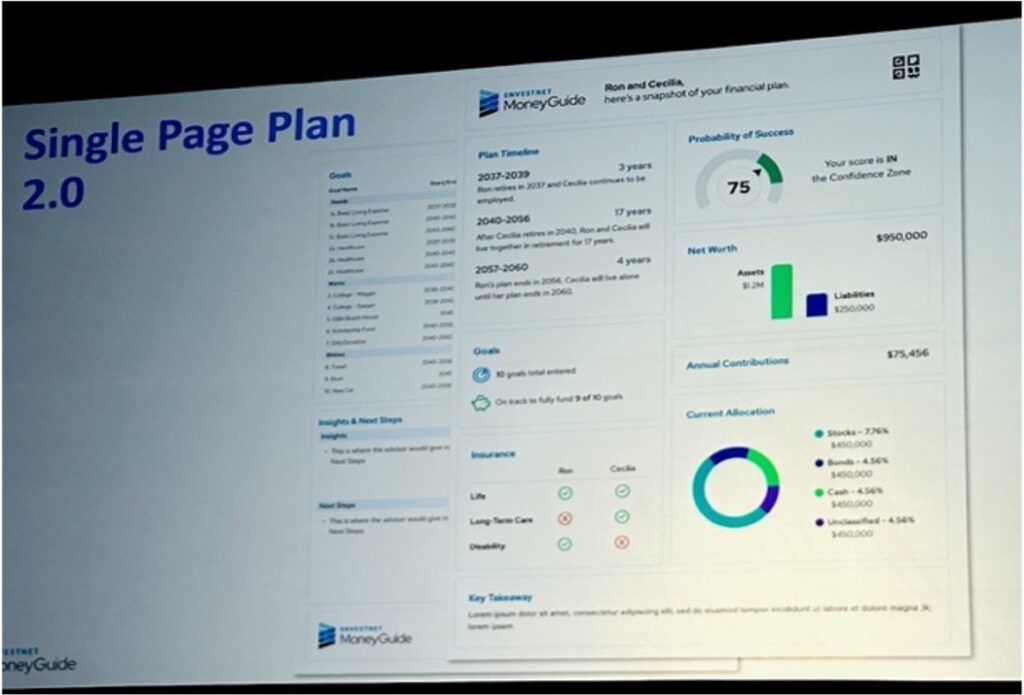
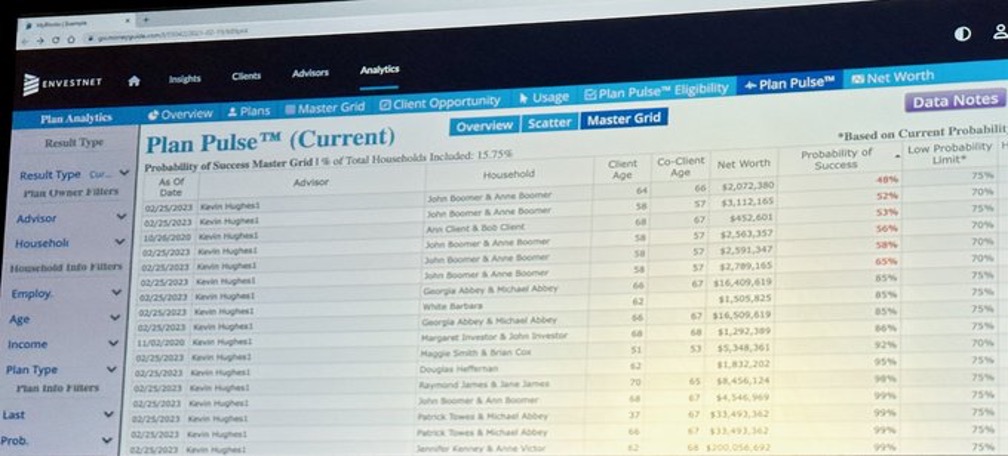
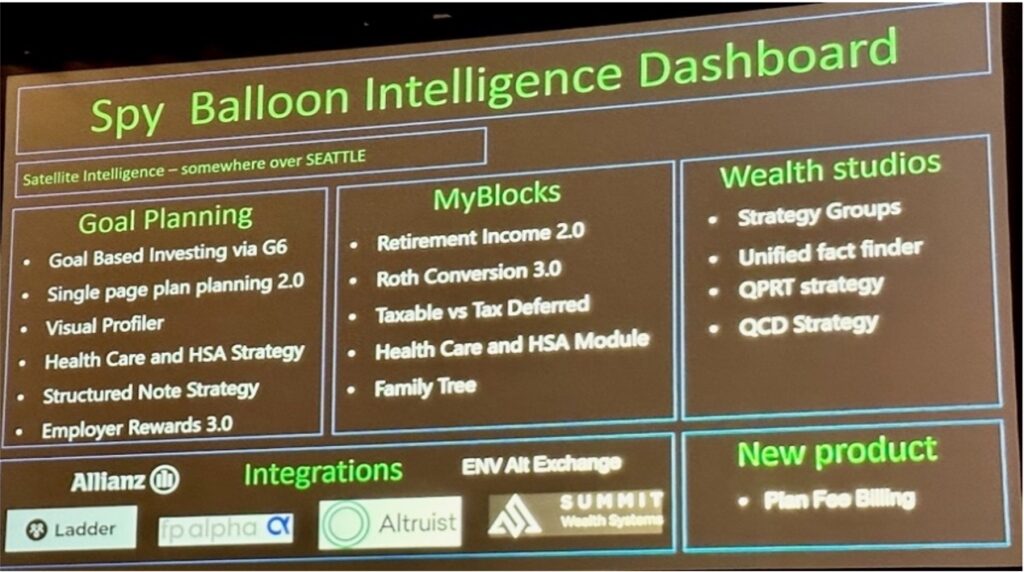
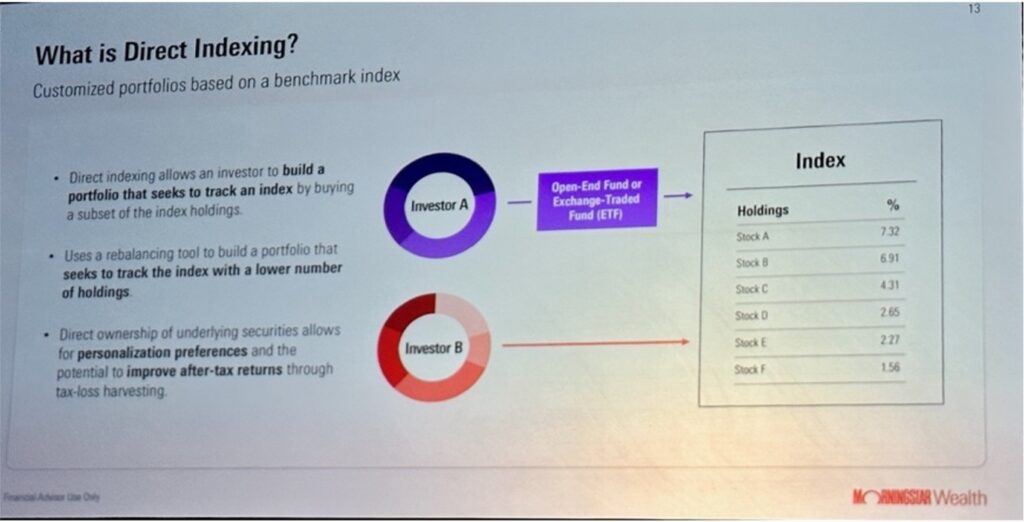
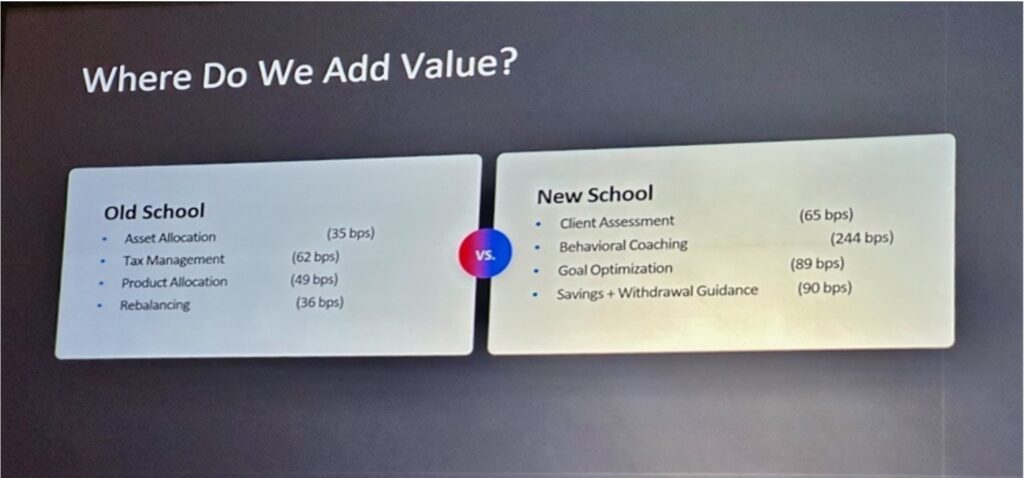
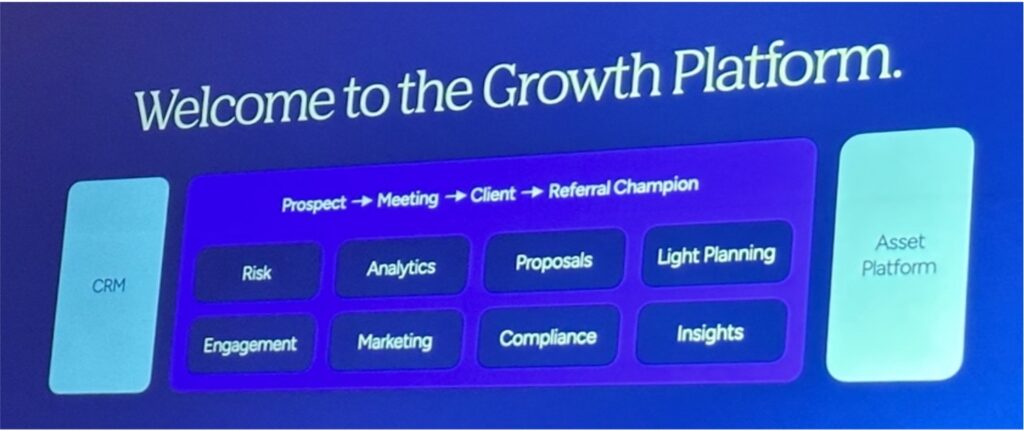
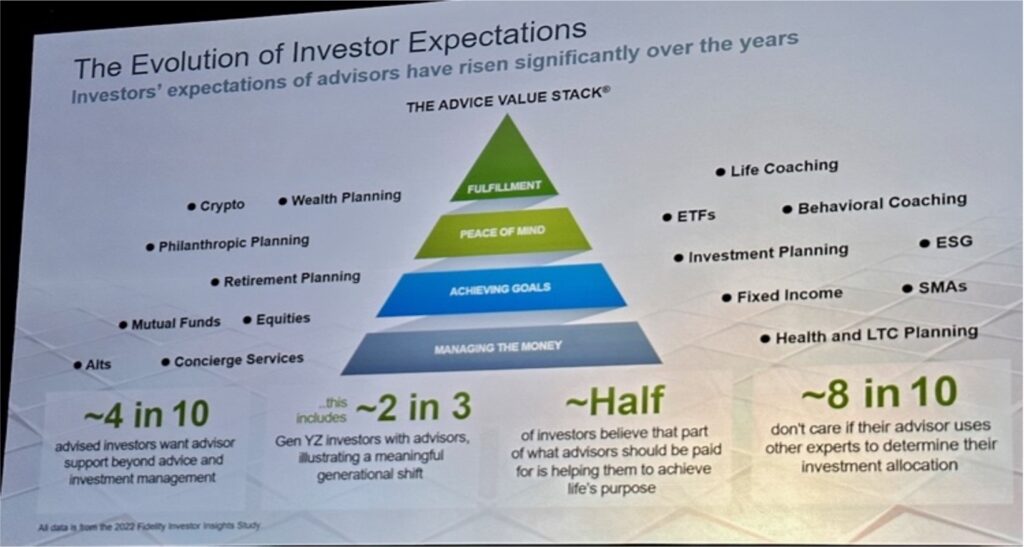
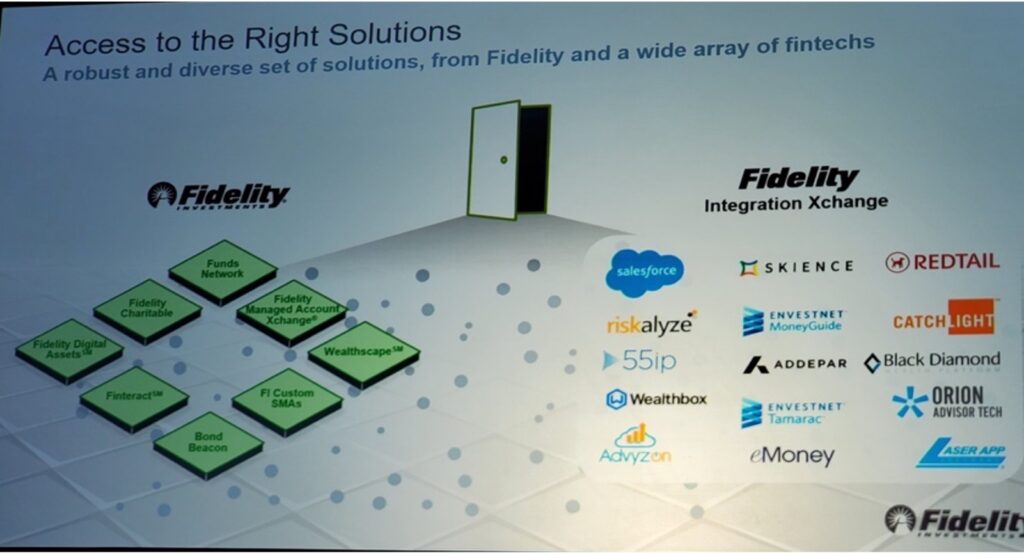
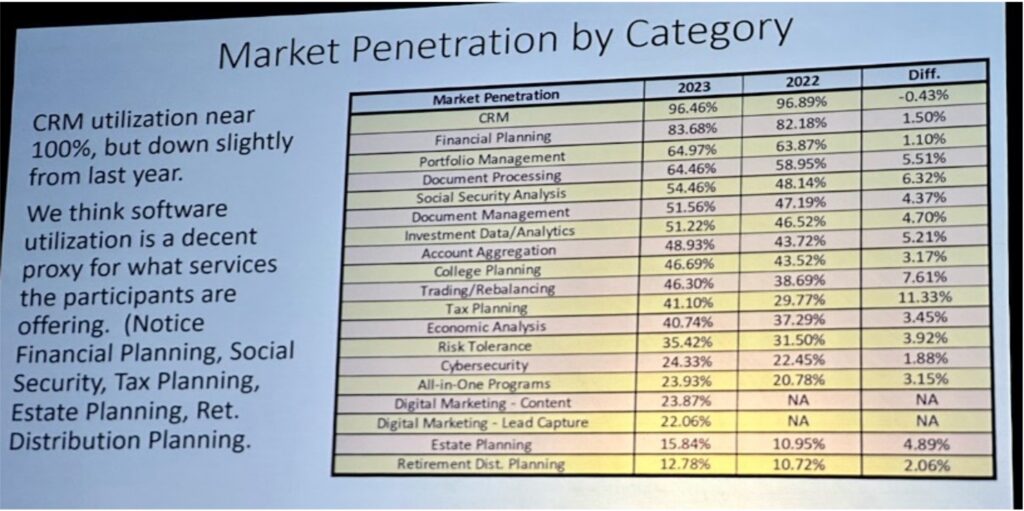
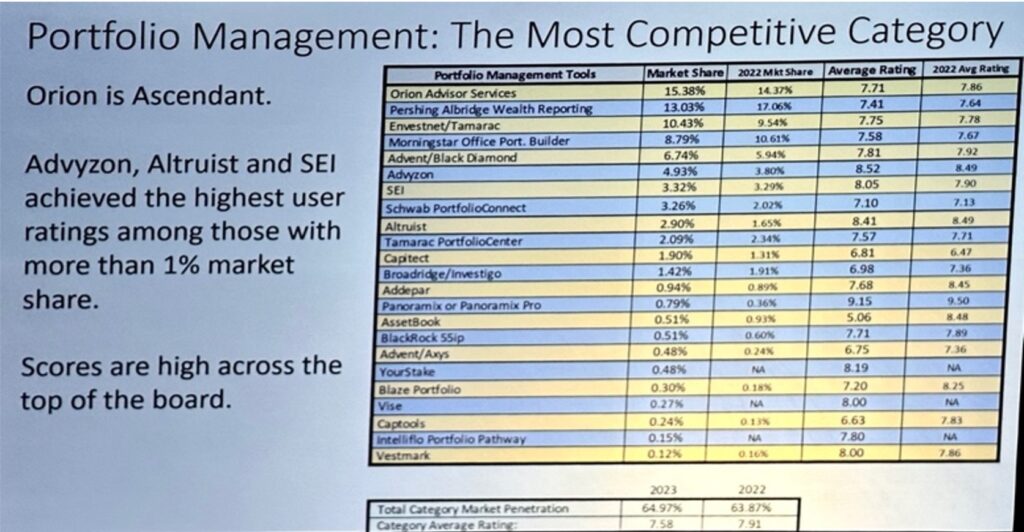
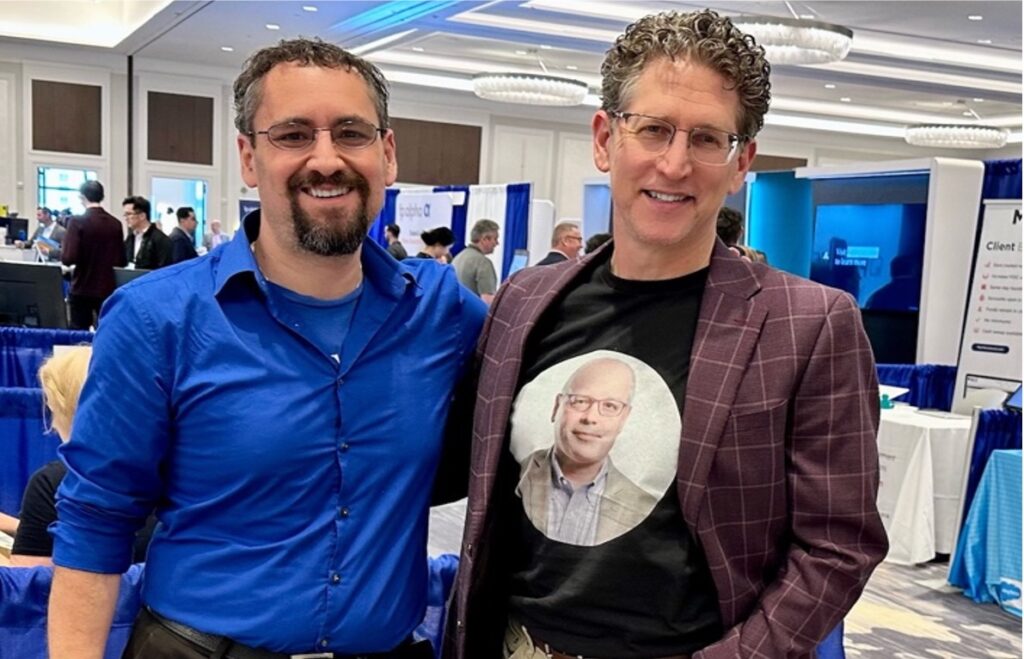



Leave a Reply